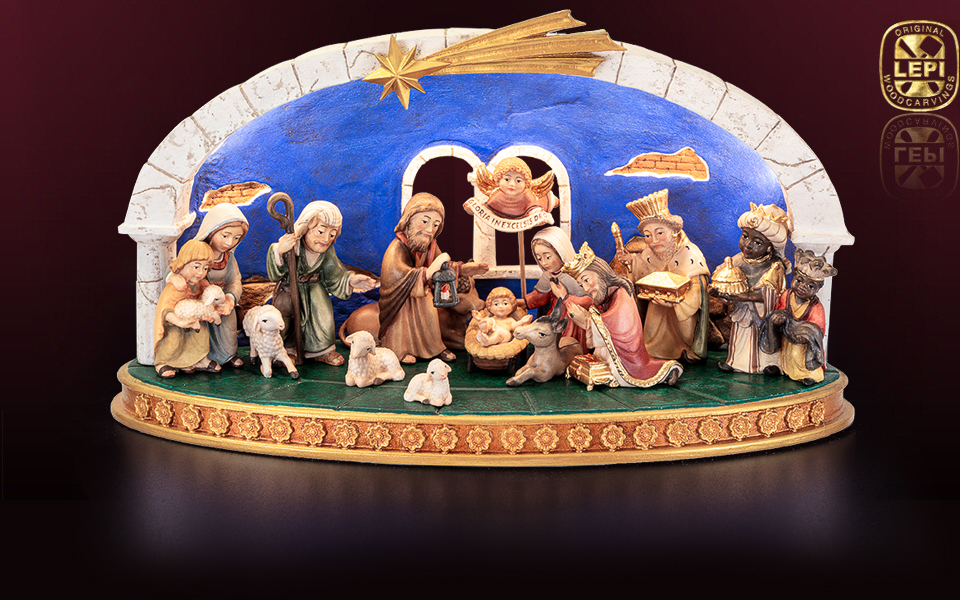
Oriental Miniature Nativity
-
Nr. 8800 (2 - 3 inch)
The bas relief, made in maple, shows two moments from the birth of Christ, in chronological order. From left to right, we see the arrival of the shepherds and then the adoration of the Magi.
The story is shown like a continuous frieze where two different scenes of the event are illustrated, seamlessly, with the result that the composition is both original and creative.
The characters are lined up, facing forwards and in the foreground, while behind them we see the architecture of the stable, with classic dignity that comes from the two Doric columns and the segmental arch of the building.
The detail of the exposed ashlar, repeated twice on the background, is a clear reference to the decay of pagan culture with the arrival of Christianity.
The star of Bethlehem crowns the scene and justifies the presence of the procession of the Magi, followed by a small servant, on the left, dressed in their processional clothes, with richly decorated headwear and elegantly styled hair.
The attitude of reverence towards the Redeemer is expressed by the Magi in different ways: the first is praying and genuflecting, while the other two are generously proffering their gifts. In the same position, on the right side, attention is drawn to the more humble details of the shepherds, such as the poor shoes that leave their feet uncovered, and their simple, unadorned clothing.
In this wooden bas relief, the carved figures of the onlookers, standing close together, form a "sculpted procession", set out so as to give the idea of a three-dimensional space: for example, the donkey turning its head towards the Child, or the shepherd about to caress the ox as it turns its head.
The fact that all of the figures were created individually and not as a group all together, highlights their powerful plasticity, the important physical weight of their bodies, the outlines of which are designed in different colours as well as with soft, fine lines, with the addition of the technical and descriptive details of the expressions, and the simple, solemn gestures emphasised by the obvious large size of the hands and faces.
What is stunning is the fact that this oriental crib is a miniature, given the tiny dimensions in which the two versions were made: 2 or 3 inch meaning it can be placed or hung easily.
In spite of the synthesis of the composition and the compact size, this work fully describes the value of the historic event it narrates, and its expressive strength is asserted in terms of sincere sentiment and visual immediacy.